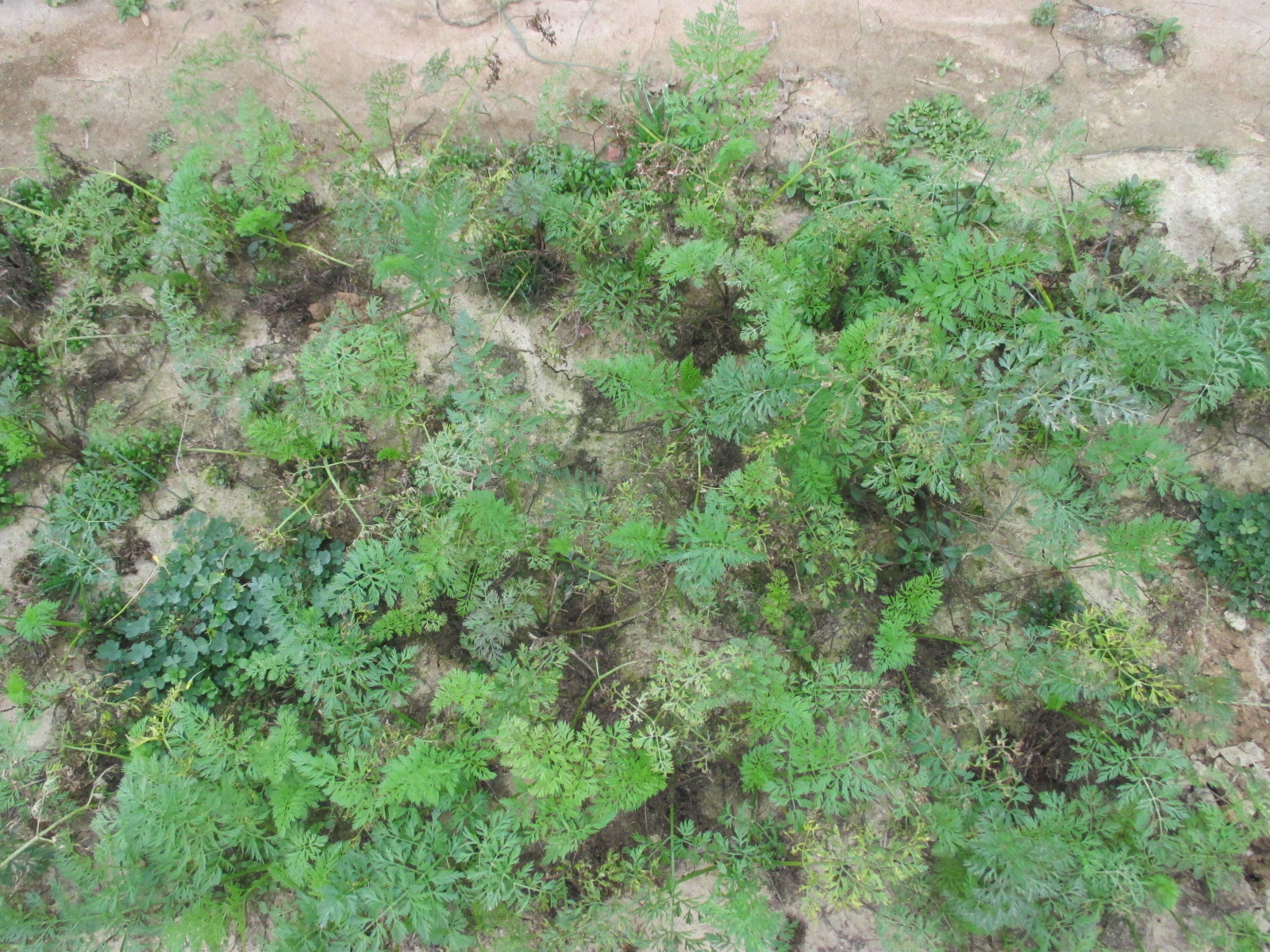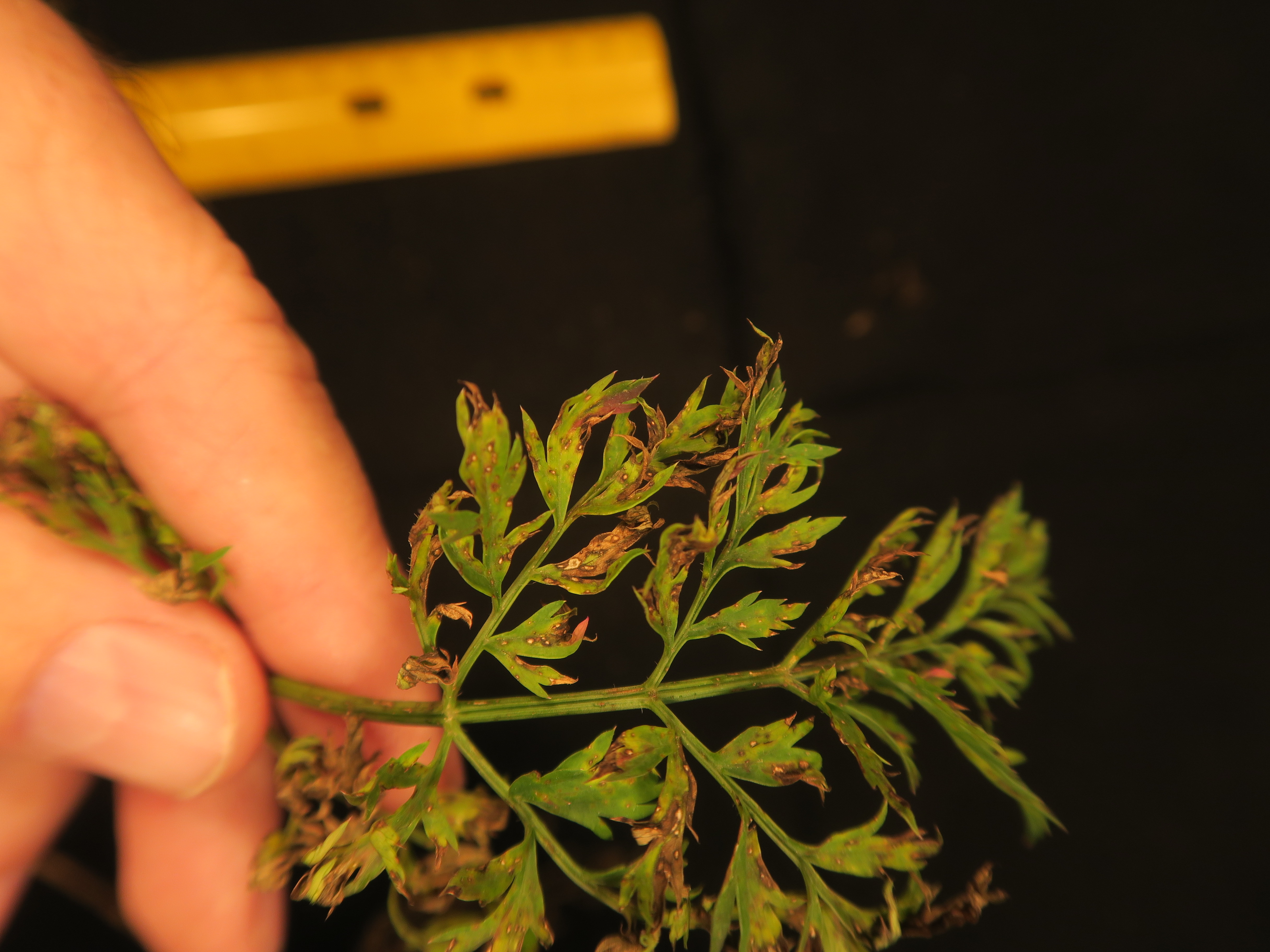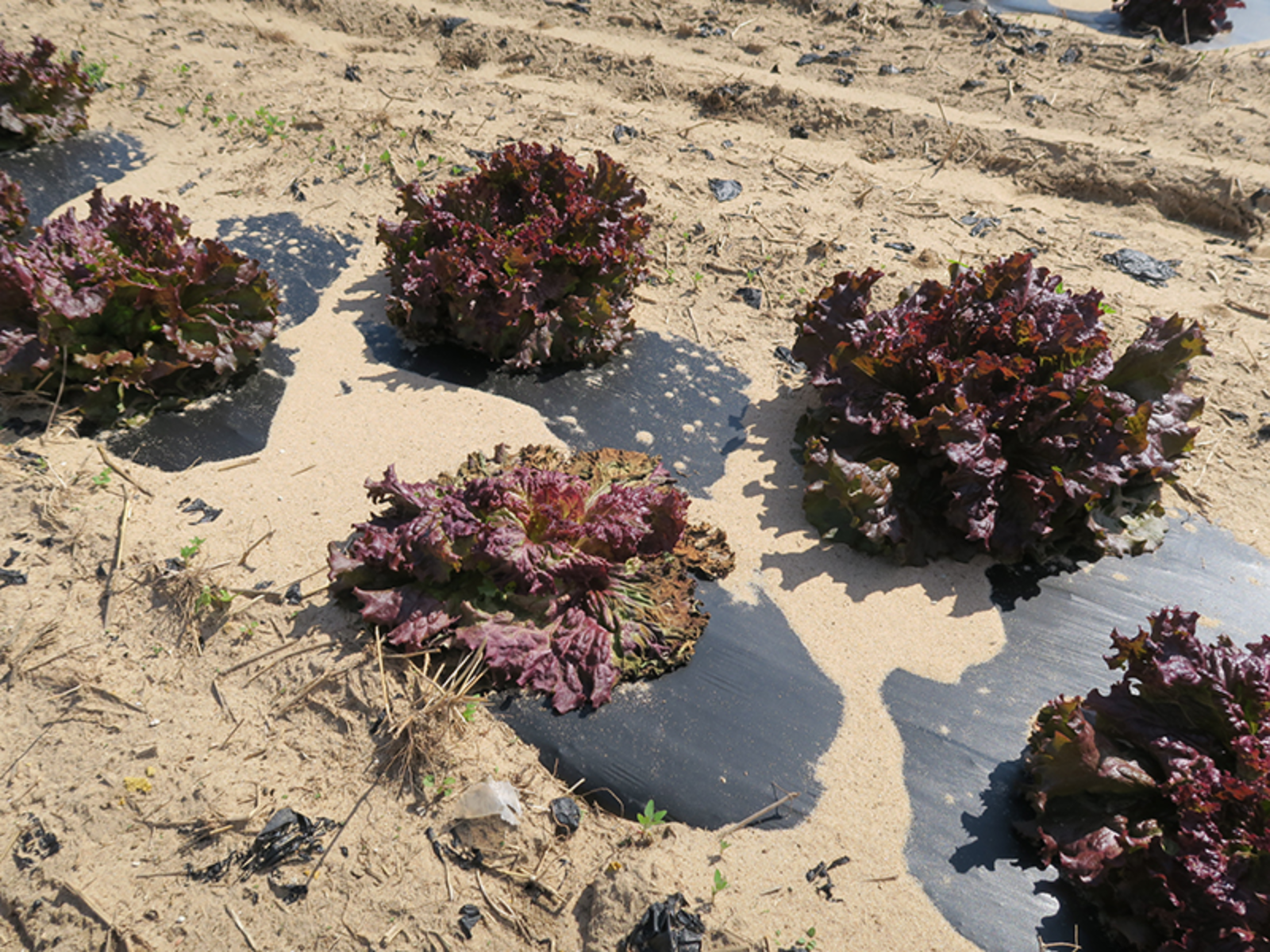Picture of the Week
December 5, 2022
Alternaria leaf blight of carrot
Dan Egel, Professor-SWPAC, Botany and Plant Pathology, Purdue University
Although most of us have put away our gardening tools, some vegetables grow well in the fall. Carrots are favored by warm days and cool nights. Unfortunately, similar temperatures also favor the disease Alternaria leaf blight of carrot. This disease is caused by a fungus, Alternaria dauci, that may survive on crop residue in the soil.
Figure one shows a stand of carrots with several leaves that appear chlorotic (yellow). A closer examination reveals small lesions on the leaves. Loss of leaves may lead to fewer or smaller carrots (Figure 2).
click image to enlarge
Since leaf wetness is necessary for disease initiation and spread, avoid overhead irrigation. The disease may be spread on seeds, therefore care should be taken when purchasing or saving seed. Crop rotations of at least two years will help to lessen disease severity. When carrot production is done, old crop residue should be plowed under. Finally, several fungicides may help to manage this disease. For the home gardener, products with the active ingredient chlorothalonil may be labeled for this disease. Organic gardeners may find copper hydroxide or copper sulfate formulations that are approved for use. Commercial growers should consult the Midwest Vegetable Production Guide.
See these other helpful items.





